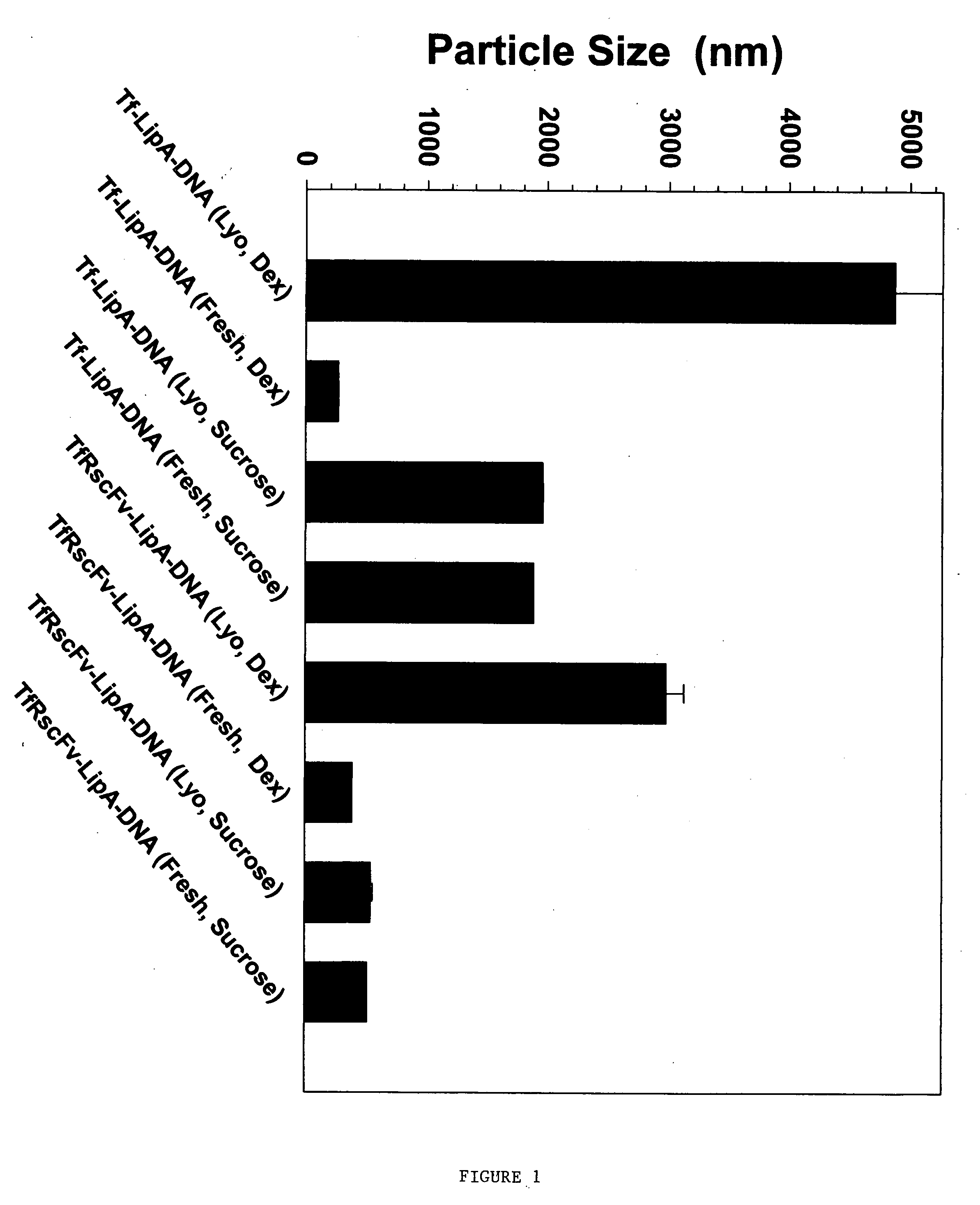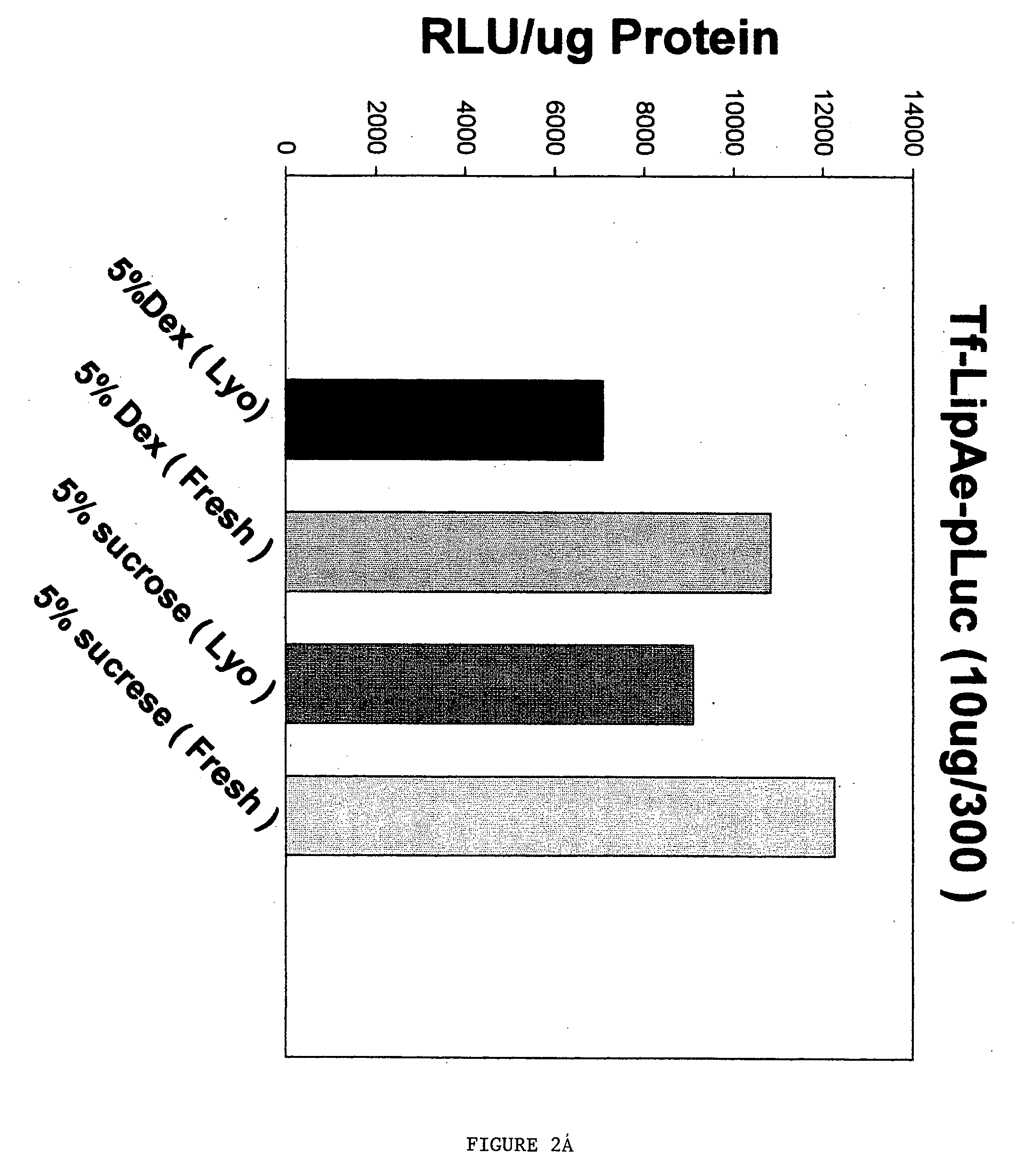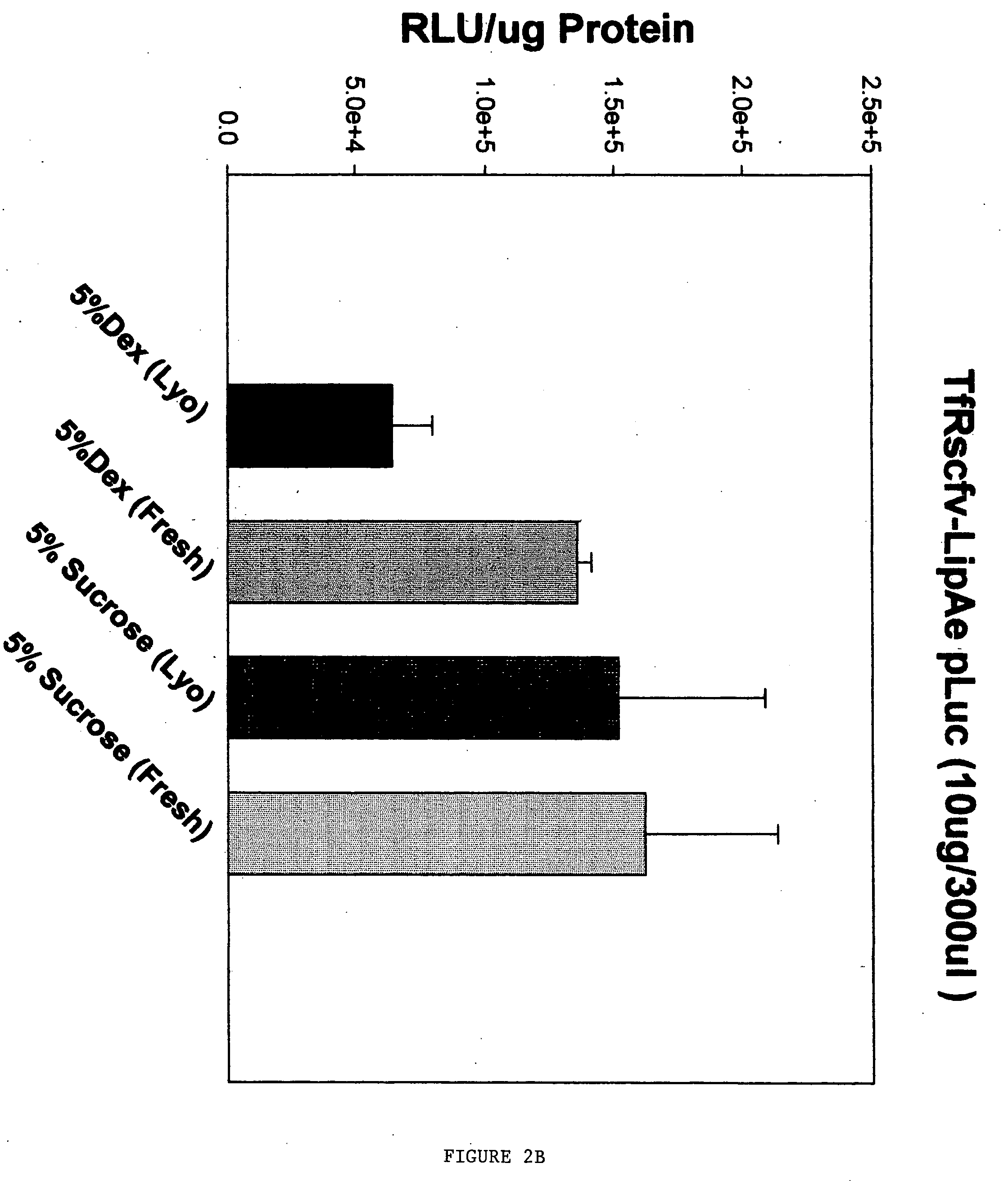Method for improving stability and shelf-life of liposome complexes
a technology of liposome complexes and stable complexes, which is applied in the field of preparing stable complexes, can solve problems such as the impracticality of administering complexes to patients
- Summary
- Abstract
- Description
- Claims
- Application Information
AI Technical Summary
Benefits of technology
Problems solved by technology
Method used
Image
Examples
example 1
Preparation of Fresh and Lyophilized Complexes with Carbohydrate and In Vitro Assessment of Activity and Size
[0044] Initial experiments were performed to test both the size and the in vitro transfection efficiency of the ligand-liposome nucleic acid complexes made with carbohydrate before and after lyophilization. Two separate ligands, Tf and TfRscFv, were tested. The complexes were made using the methodology described in U.S. patent application Ser. No. 09 / 601,444 and published U.S. patent applications Ser. Nos. 09 / 914,046 and 10 / 113,927 [See also, Xu, L., et al. Human Gene Therapy 10:2941-2952 (1999); Xu, L., et al., Human Gene Therapy 13:469-481 (2002); and Xu, L., et al., Molecular Cancer Therapeutics 1:337-346 (2002)]. In each complex, the liposome was a 1:1 ratio of DOTAP:DOPE, identified herein as Liposome A (LipA). The DNA used was a plasmid carrying a gene encoding the firefly luciferase gene. In all cases the carbohydrate solution was added as the last step in preparation...
example 2
In Vivo Human Prostate Tumor Targeting by Lyophilized Complex After Storage at 2-8° C. for One Week
[0051] In vivo tumor targeting of a liposome complex with 10% sucrose (freshly made or lyophilized and stored for 1 week at 2-8° C. was tested using enhanced green fluorescence protein (EGFP) as the reporter gene in the complex. The complex was TfRscFv-Liposome A-pEGFP where liposome A is DOTAP:DOPE (1:1). The ratio of the three components was 0.3 μg:14 nmoles:1 μg (TfRscFv:Liposome:DNA). The complex was prepared and lyophilized as described above in Example 1. Post-lyophilization, the complex was stored refrigerated at 2-8° C. for one week. The samples were reconstituted by the addition of endotoxin free water to a volume equal to that prior to lyophilization as described in Example 1.
[0052] Mice bearing DU145 xenograft tumors of at least 50 mm3 were i.v. injected 3 times over 24 hours with various complexes (freshly made preparation with 5% dextrose; freshly made preparation with 1...
example 3
In Vivo Human Pancreatic Tumor Targeting by Lyophilized complex After Storage at −80° C. for One Month
[0053] The stability of the lyophilized complex also was tested after one month of storage at −80° C. by targeting to pancreatic cancer xenograft tumors. The complex (the same complex and ratio as described above in Example 2) was prepared with 10% sucrose ad lyophilized as described in Example 1. Post-lyophilization the samples were stored at −80° C. for one month, then reconstituted with endotoxin free water as described in example 1.
[0054] As shown in FIG. 4B, the tumors from mice i.v. injected 3 times over a 24 hour period (as in Example 2 above) showed an even higher level of EGFP gene expression than found after injection with the freshly prepared complex. Again, very little or no expression was seen in the liver.
PUM
| Property | Measurement | Unit |
|---|---|---|
| temperature | aaaaa | aaaaa |
| temperature | aaaaa | aaaaa |
| temperature | aaaaa | aaaaa |
Abstract
Description
Claims
Application Information
 Login to View More
Login to View More - R&D
- Intellectual Property
- Life Sciences
- Materials
- Tech Scout
- Unparalleled Data Quality
- Higher Quality Content
- 60% Fewer Hallucinations
Browse by: Latest US Patents, China's latest patents, Technical Efficacy Thesaurus, Application Domain, Technology Topic, Popular Technical Reports.
© 2025 PatSnap. All rights reserved.Legal|Privacy policy|Modern Slavery Act Transparency Statement|Sitemap|About US| Contact US: help@patsnap.com



